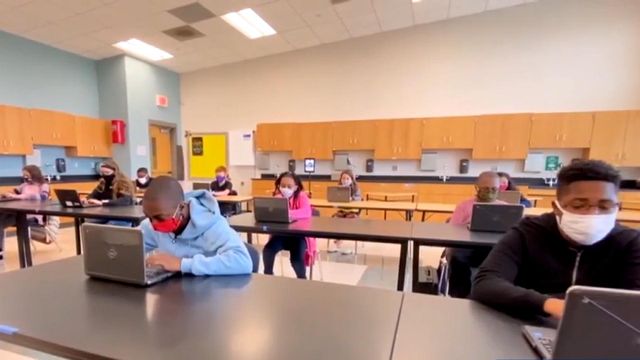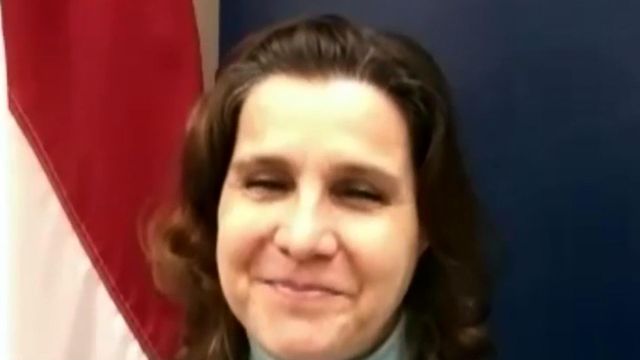How safe are students at school amid pandemic?
With coronavirus cases surging across North Carolina and more school districts making plans to bring more students back to the classroom for in-person instruction, questions are swirling as to how safe children are at school amid the pandemic.
Posted — Updated"Studies show that there seems to be less viral transmission from children back to their households or from children to other children that they are around," Dr. Mandy Cohen, secretary of the state Department of Health and Human Services, said during a recent coronavirus task force briefing.
Less transmission doesn't eliminate the possibility, which raises concern for many parents and teachers who are apprehensive about heading back to classrooms even with safety protocols in place.
"No, sir," Darlene Richardson said emphatically when asked if she was comfortable sending her grandchildren back to school.
But Joshua Humble, a father, feels differently, saying, "I personally have no issues with them being in school right now."
Using a voluntary database from Education Week, WRAL Investigates found that North Carolina schools are performing better than much of the country, but that's only because an influx of data from public schools from other states was recently submitted to Education Week.
Before that, both student and staff coronavirus rates per 100,000 were higher in North Carolina than in schools across the country.
U.S. schools average 17 positives per 100,000 students. In North Carolina it’s nine. As for staff, nationally it’s 27 members per 100,000, while it's 19 in North Carolina.
Education Week also looks at community spread at the ZIP code level where the participating schools are located. Only the national staff positivity rate was above the community spread rate.
On a more local level, Wake County has reported 93 instances of coronavirus in schools since late October. Only two of those instances were possibly contracted at school, according to school system’s contact tracing.
The national database also shows safety measures in the classroom do work. The positivity rate among students was seven times higher in schools that did not require face masks. The staff positivity rate in those schools was four times higher.
Grandparent Roderick Moye said having guidelines is one thing, but following them is another.
"It's not going to get under control if we keep doing the same thing, trying to send them to school, then you go a week later and you got reports of kids having COVID," Moye said.
"I think that the schools definitely have a challenge as far as handling it as well as they can," Humble said.
How much virus and who’s spreading the virus in classrooms is hard to nail down, since many children may not show symptoms. However, one study out of England suggests staff members are the key spreaders.
Examining 30 educational setting outbreaks at the beginning of the pandemic, staff-to-staff spread was responsible for 15 of the outbreaks. There were seven staff-to-student outbreaks, six student-to-staff outbreaks and just two student-to-student outbreaks.
With most North Carolina high schools still holding all classes online, getting a clear picture of age-level spread is challenging. Nationally, though, the older students are more at risk, with eight high school students per 100,000 testing positive, compared with five per 100,000 in middle school and four per 100,000 in elementary school.
"Any spread is too much," Richardson said. "I don’t want the 1 percent to be my grandchild or anyone else’s child."
Related Topics
• Credits
Copyright 2024 by Capitol Broadcasting Company. All rights reserved. This material may not be published, broadcast, rewritten or redistributed.






